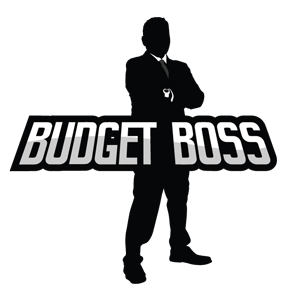Tuesday Tip of the Week: August 8, 2017
What is Your Investment Personality?
Happy Tuesday friends and welcome back to my Tip of the Week here at Budget Boss. Today kicks off Investment Week at Budget Boss. Investments have the power to scare people. They often intimidate people and even keep them up at night. I think these thoughts can be misguided. I believe investments are an important part of any financial plan. So how do we get over the fear and allow investments to work for us? Education is the answer. You have to understand what you are invested in. You have to understand what the investments purpose is. Most importantly, you have to understand your own personal risk tolerance. It all starts with understanding yourself and then understanding the product. This week at Budget Boss will be aimed at understanding investments and how they can work for you in your journey to financial freedom. Today’s post will be about the different levels of risk you will fall into as an investor. Knowing this will help guide you to what you should be invested in. Here are the most common investment personalities.
Conservative Investors:
If you fall into the category of conservative you have a high aversion to risk. You might ask yourself, “What is a high aversion to risk?” Certain people have a hard time dealing with the market going up and down. There is nothing wrong with that because every investor is different. Being conservative can be used to your advantage as it means that you won’t have to deal with the stress of down markets. Conversely, you won’t experience the same growth in up markets. Conservative investors have almost all their money in Fixed Income. Fixed Income means you invest your money with a guaranteed rate of return at periodic intervals and the return of your principal at maturity. Because of the guarantees involved, returns will be lower, think low risk – low reward. Fixed Income investors can achieve substantial returns as their investment amounts get larger, usually later in life.
Types of Conservative Investment Products:
Guaranteed Investment Certificates (GIC’s), Bonds, Money Market Funds, Cash and its equivalents, Bond Funds, etc.
Typical Time Horizon:
One to Five Years
Typical Asset Mix:
0-25% Equity
75-100% Fixed Income
Moderate and Balanced Investors:
Most people fall into the category of being a Moderate or Balanced Investor. The reason for this is that while most people have an aversion to losing their money, they do understand that over time their money will grow in the stock market. For a goal like retirement which has a long time horizon, using the market to your advantage is important and many realize that. Despite the introduction of the equity market (stocks), most people do want to limit risk so having exposure to the Fixed Income Market remains necessary. During up markets, the equity portion of your portfolio will perform, while during down markets the fixed income portion will limit loss. Balanced investors have the best of both worlds, experiencing both growth and protection.
Types of Moderate or Balanced Investments:
Mutual Funds, Exchange Traded Funds (ETF’s), Balanced Funds, Bonds and Bond Funds, Stocks, etc.
Typical Time Horizon:
Three to Five Years and Beyond
Typical Asset Mix:
40-60% Equity
60-40% Fixed Income
Advanced and Aggressive Investors:
Investors who fall into the category of advanced or aggressive have high exposure to the equity markets. This means that they will feel the full growth potential during up markets. Conversely, they will also experience greater loss during down markets. High Risk, High Reward is the mantra of the aggressive investor. In order to take full advantage of the market, you have to be in it for the long haul as an aggressive investor. These are the “Buy and Hold” Investors so those with strong emotions should not fall into this category.
Types of Advanced or Aggressive Investments:
Stocks, International Equity Funds, Mutual Funds, Emerging Market Funds, Sector Funds, etc.
Typical Time Horizon:
Ten Years and Beyond
Typical Asset Mix:
80-100% Equity
Knowing your own personal risk tolerance is key in understanding where to invest your money. The reason this is important is that it is not what the market does that is crucial to you. The market goes up and the market goes down. It always has and it always will. What is important is how you react to the market during these times. This is where planning comes into play. Your financial advisor should show you what you are invested in based on your own personal risk tolerance. These investments are used to accomplish goals so they should show you what will happen if you stick to the plan. They should also show you what to expect on a positive end, but also a negative end. The goal is the keep the chart moving upwards and that doesn’t happen if a poorly crafted plan is created or a good plan is not followed.
Thanks for reading my post today on investment personality. If you would like to learn your own personal risk tolerance see my link below where you can find out what kind of investor you are. Tune in tomorrow where I will show you what types of vehicles you can park these investments in for maximum efficiency. Have a great day friends!
“Risk comes from not knowing what you’re doing.” – Warren Buffett
Want to know what your Investor Personality is? Click the Link Below!
https://budgetboss.ca/investor-type/
Facebook – @JoeBudgetBoss LinkedIn – Joseph James Francis Quora – Joseph James Francis
Twitter – @JoeBudgetBoss Instagram – @JoeBudgetBoss
Joseph James Francis is a Financial Advisor. You can find him on various social media platforms and at www.budgetboss.ca

